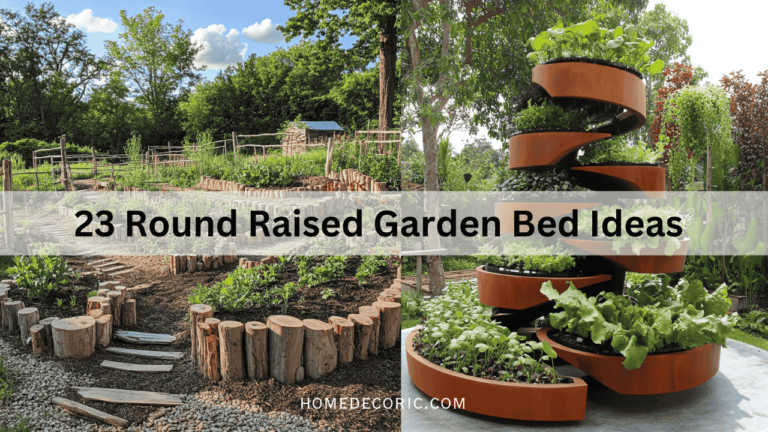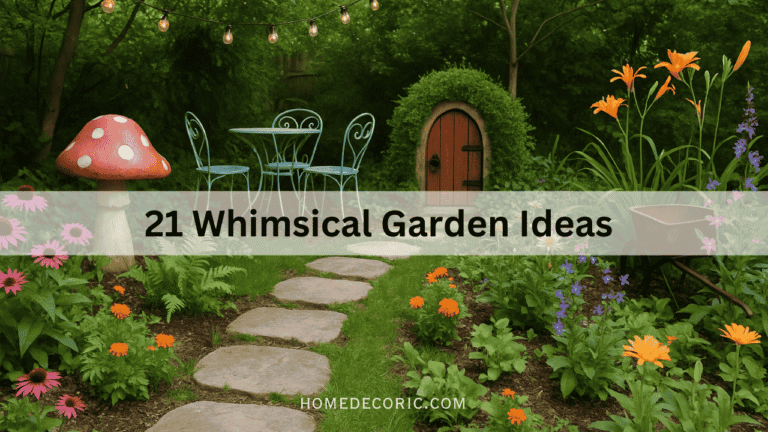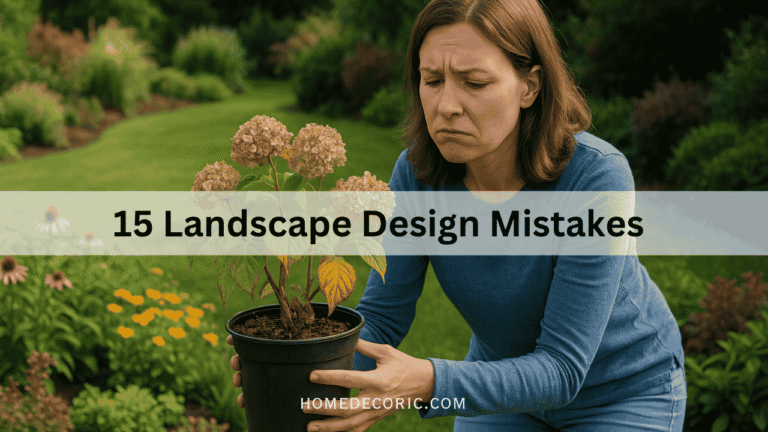How to Design a Container Garden Step-by-Step
If you’ve ever wanted a garden but found yourself staring at your tiny balcony, small patio, or lack of garden space, thinking, “Yeah, that’s not happening,” guess what?
Container gardening is here to save the day! Imagine creating your own lush, green oasis without uprooting your entire living room to make room for a garden. Sounds dreamy. Well, it’s possible, and I’m here to guide you through how to design a container garden step by step.
I’ve been container gardening for a while now (and let me tell you, it’s become somewhat of an obsession). Over time, I’ve learned much about what works, what doesn’t, and the small but crucial tips that can make your container garden flourish and thrive. Whether you’re a beginner or a seasoned pro, I’ve covered you. So, let’s dive in and get your garden game on point.
1. Why Container Gardening?
You might be asking, “Why bother with containers? Why not just plant directly into the ground?” Oh, buddy, let me give you the lowdown:
- Perfect for Small Spaces: Whether you live in an apartment, have a tiny yard, or want to add a bit of greenery to your front porch, container gardening is the ultimate hack. You can create a garden anywhere, even on your windowsill (yes, really).
- Mobility: Want to move your plants around based on the season? With containers, you can easily rearrange your garden, especially when dealing with weather changes or just wanting to give your patio a fresh look.
- Easy to Maintain: Container gardens often need less maintenance than traditional in-ground gardens. By moving the containers around, you can control the soil quality, drainage, and even the amount of sunlight your plants get.
- No Weeds: If you’re tired of those pesky weeds in your garden, container gardening is your best friend. It’s much easier to manage weed growth in a confined space.
Still not convinced? If I can keep my plants alive with my black thumb, you can pull this off.
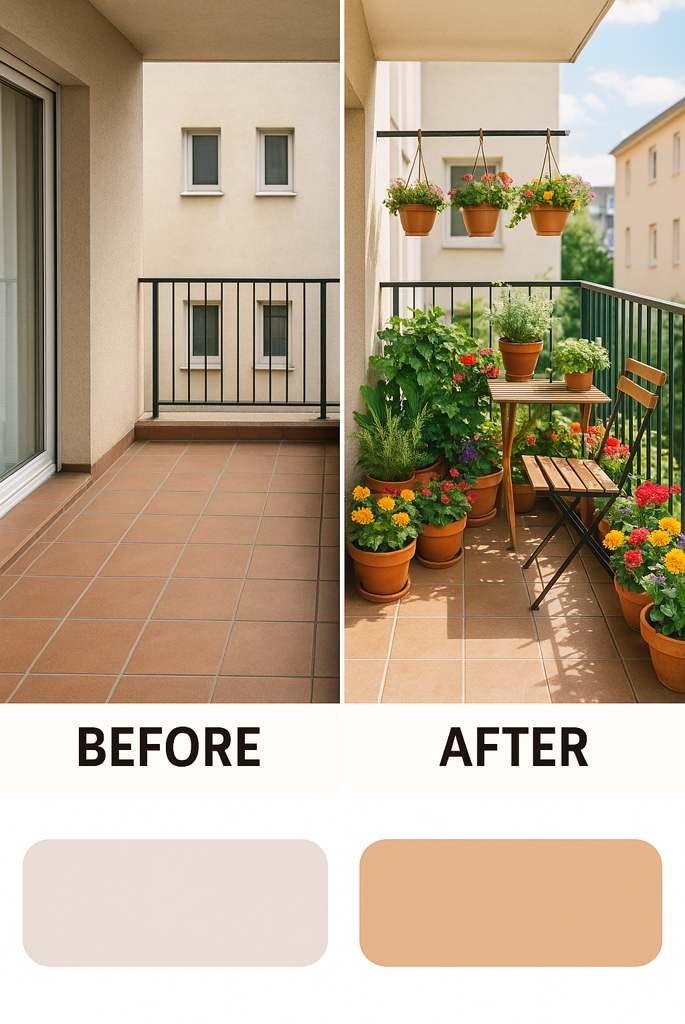
2. Choosing the Right Containers
Alright, let’s talk containers. After all, that’s the whole point of container gardening, right? The good news is that there are many options, and your choice will depend on factors like plant type, aesthetics, and size.
What Size Container Do You Need?
Pro Tip: The bigger, the better (within reason). Larger containers hold more soil, so your plants will have more room to grow and more moisture to survive hot days. Small pots are cute, but often don’t provide enough space for plants to flourish.
- For Small Plants: Think herbs, small flowers, or leafy greens 3 to 5-gallon containers are a sweet spot.
- For larger plants: If you’re growing vegetables, shrubs, or even trees, choose containers that are 10 to 20 gallons.
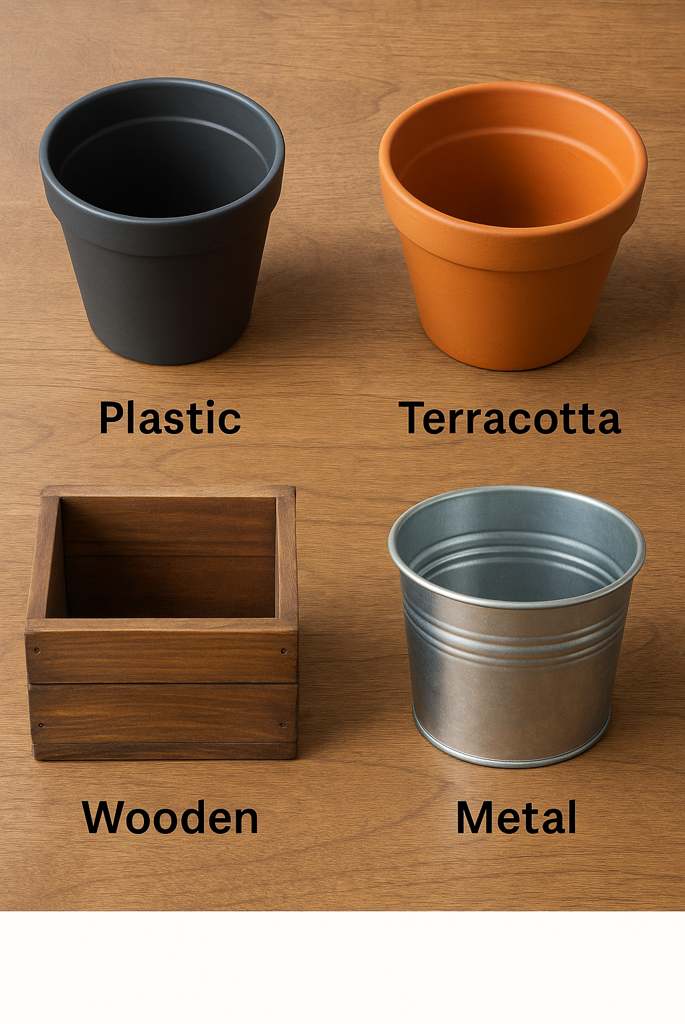
Material Matters
Containers come in all sorts of materials, each with pros and cons. Let’s break it down:
- Plastic Pots: Cheap, lightweight, and easy to move around. They also tend to dry out quicker, so you’ll need to water more often. But hey, they’re easy to work with!
- Terracotta Pots: Classic and beautiful, these pots help with air circulation and drainage. But, and this is important, they can be heavy and break if dropped (so maybe don’t knock over your plant and accidentally step on it).
- Wooden Containers: These give a rustic feel and are great for larger plants. Just be mindful of rot, so make sure they’re adequately sealed.
- Metal Containers are sleek and modern, but they can get really hot in the sun. To protect your plants’ roots, you might need to add a layer of insulation.
Fun Fact: For a quirky touch, you can use repurposed items like old boots, buckets, or baskets. Container gardening is all about creativity.
3. Choosing the Right Plants
Now that you’ve got your containers, it’s time to play plant matchmaker! When selecting your plants, choosing the right ones for your specific container, location, and climate is important. Here’s a quick guide to get you started:
- For Sunny Spaces: If your porch or balcony receives a lot of sunlight, choose sun-loving plants like petunias, marigolds, or succulents.
- For Shady Spaces: No worries, shade-loving plants like ferns, hostas, and impatiens thrive in low-light areas.
- For Edible Gardens: Yes, you can grow veggies in containers! Try herbs like basil, mint, and thyme or veggies like tomatoes, peppers, and lettuce. Just remember that they need a lot of sun.
Rhetorical question time: Ever wonder why your plants look like they just gave up on life? It’s probably because you picked the wrong plants for the location. Trust me, don’t do it.
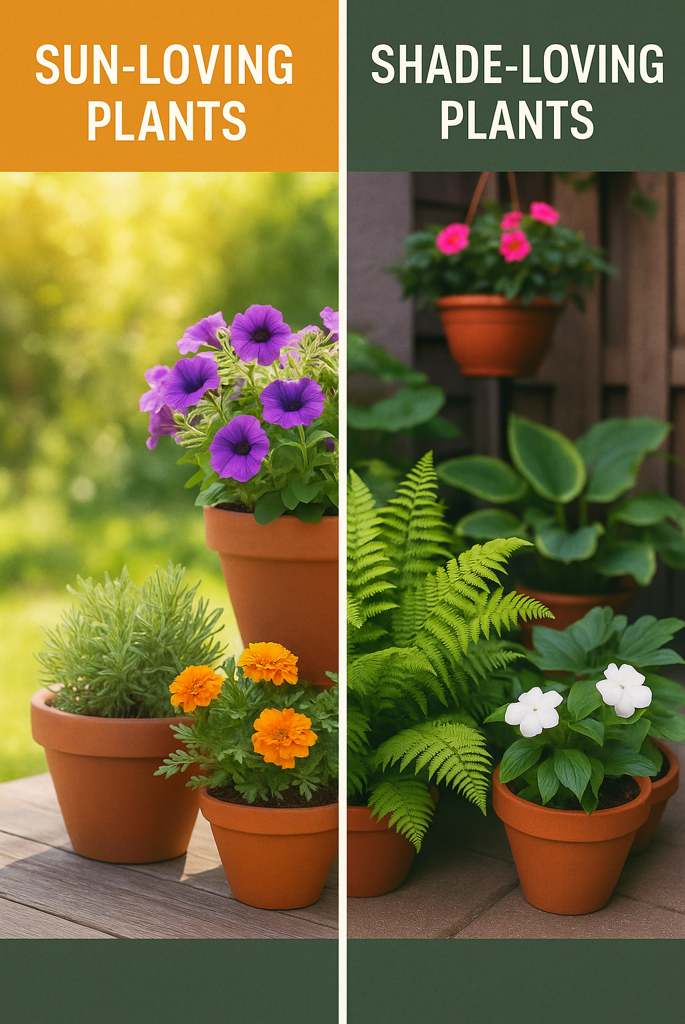
4. Soil and Drainage: The Lifeblood of Your Garden
The secret sauce to container gardening is the right soil and drainage. Trust me, without good drainage, you’re setting your plants up for disaster.
Choosing the Right Soil
You can’t just grab any old dirt from the backyard. Plants in containers need special potting mix, and here’s why:
- Lightweight and Well-Draining: The potting mix is lighter than garden soil, which helps with proper root growth. It also allows water to flow through the container without letting the roots sit in water (hello, root rot!).
- Special Mixes for Special Plants: Different mixes are available for different plants. For instance, cactus and succulent potting mix is more draining, while orchid mix is designed for orchids.
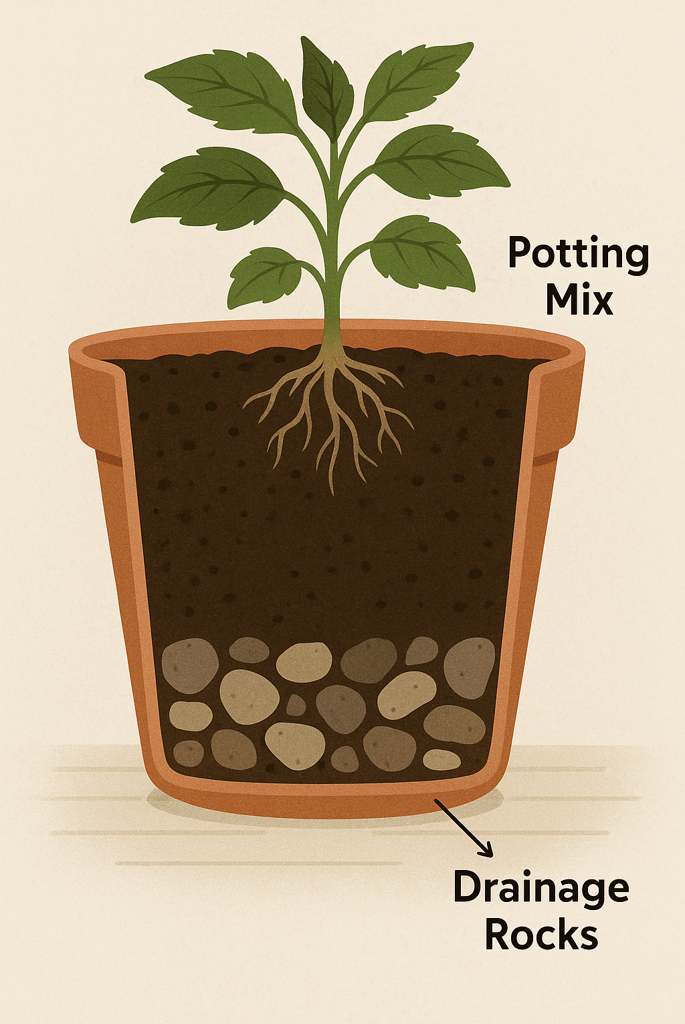
Drainage: The #1 Secret to Success
Without drainage holes, your container will become a bog for your plants. Yikes! Ensure your containers have good drainage to avoid waterlogged roots. If you’re using containers that don’t have drainage holes, you can DIY a solution by adding rocks or pebbles at the bottom of the pot.
5. Planting Your Garden
Alright, the moment of truth-planting time. Before you start shoveling in the soil, here’s what you need to know:
- Fill the Container with Soil: Add soil to your container until it’s about 2 inches below the rim. This will allow space for watering.
- Position Your Plants: Before planting, lay your plants inside the container to see how they fit. Think about the plant height, color contrast, and how the plants will grow together.
- Planting: Once you’re happy with the arrangement, start planting. Remove each plant from its nursery pot, loosen the roots (don’t be shy), and place it in the soil.
- Watering: Water the plants thoroughly after planting, ensuring the soil settles around the roots.
Don’t overcrowd your plants! They need space to breathe and grow, so follow the spacing recommendations on plant labels.
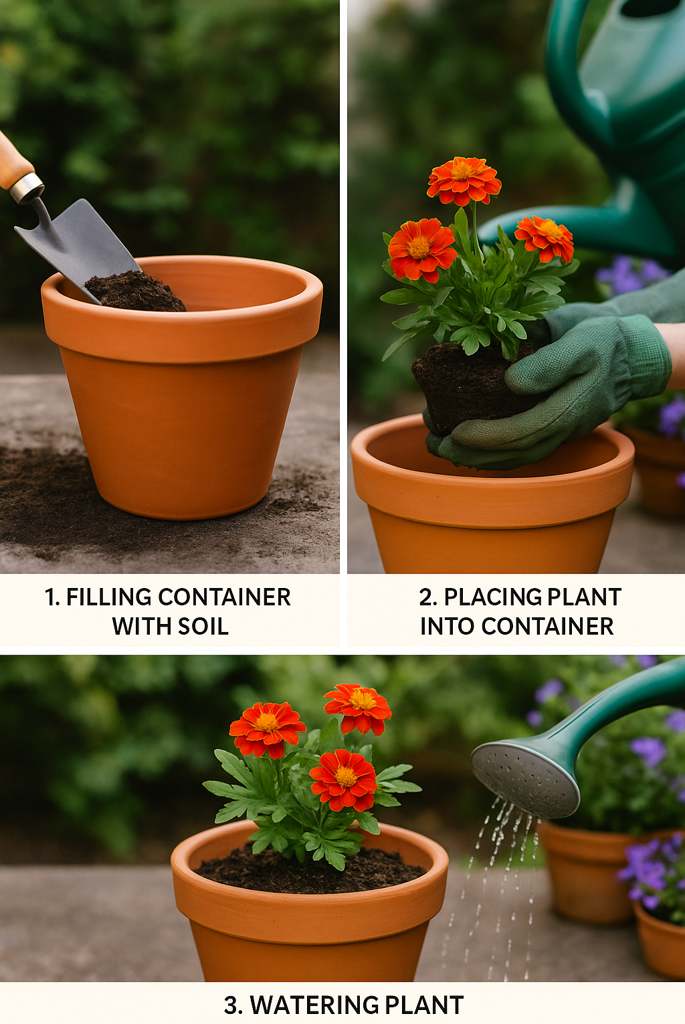
6. Caring for Your Container Garden
You’ve planted your beautiful garden, now what? Well, don’t just leave it to fend for itself, OK? Here are a few tips to keep your container garden thriving:
- Watering: Water your plants when the top inch of soil feels dry. Don’t drown them, but don’t let them dry out. It’s all about balance.
- Fertilizing: Since your plants are in containers, they rely on you for all the necessary nutrients. Fertilize them once a month (or more if you’re growing heavy feeders like tomatoes).
- Sunlight: Move your containers around to ensure your plants get enough sun. If you’re growing veggies, you’ll need at least 6 hours of direct sunlight a day.
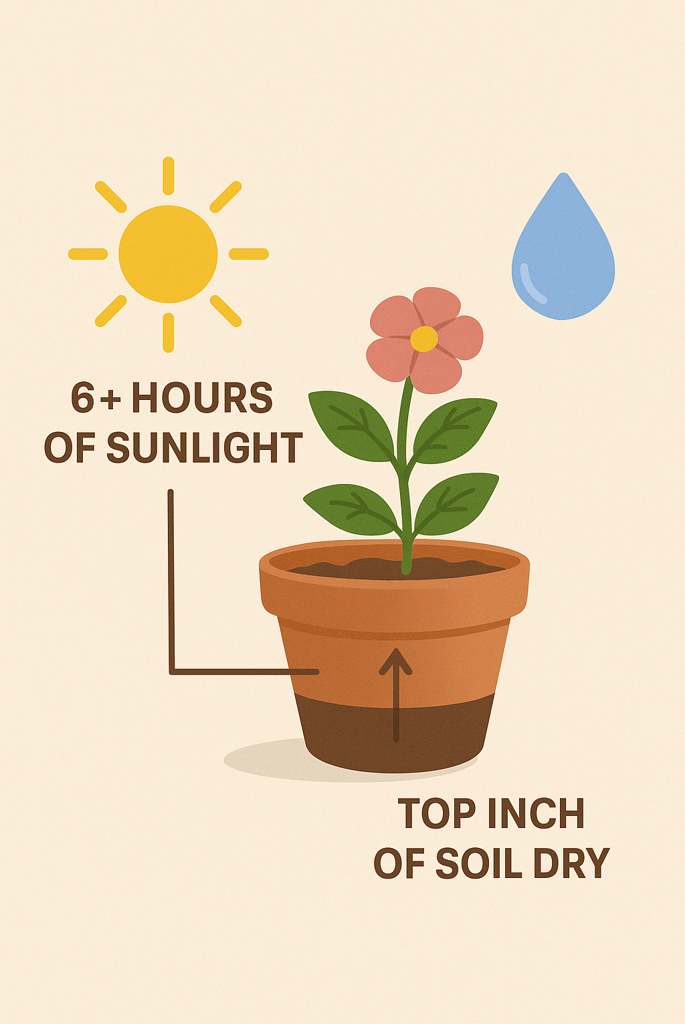
7. Tips and Tricks for a Lush Container Garden
Want to take your container garden to the next level? Here are a few insider tips:
- Add Colorful Pots: Mix and match colors to create visual interest and a dynamic look.
- Layer Plants: For depth, combine plants of different heights and textures. Use tall plants in the back, medium plants in the middle, and trailing plants in the front.
- Self-Watering Containers: If you’re forgetful (like me), self-watering containers are a game-changer. They help keep your plants watered while you live your best life.
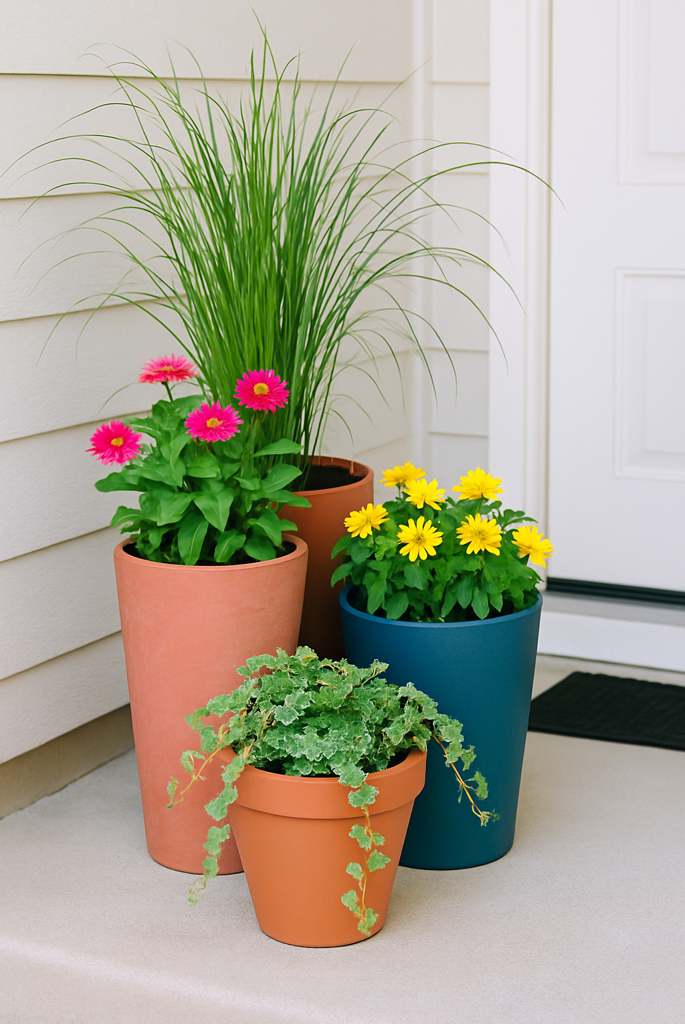
Final Thoughts
And there you have it, a step-by-step guide to designing your very own container garden! From choosing the proper containers and plants to caring for your green friends, creating a vibrant outdoor space is easier than you think. So, grab some pots, get your hands dirty (don’t worry, it’s worth it), and start planting your dream garden.



